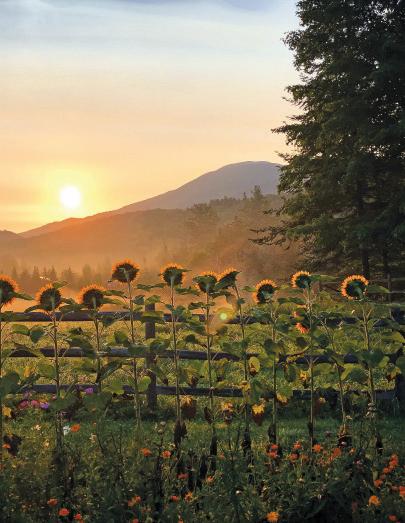
North Country School Curriculum Guide 2023–2024 GRADES 4–9 4382 CASCADE ROAD, LAKE PLACID, NY 12946, 518-523-9329

Table of Contents
Page 6 I Lower School Overview
Page 7 I Fourth Grade
Page 8 I Fifth Grade
Page 9 I Sixth Grade
Page 11 I Lower School Arts & Electives
Page 12 I Upper School Overview
Page 13 I Seventh Grade
Page 14 I Eighth Grade
Page 15 I Ninth Grade
Page 16 I Upper School Math Courses
Page 18 I Upper School Arts & Electives
Page 20 I Foreign Language
Page 21 I Learning Support Overview
Page 22 I Learning Support Services for Fourth through Sixth Grade
Page 23 I Learning Support Services for Seventh through Ninth Grade
Introduction
NORTH COUNTRY SCHOOL FOUNDER
Walter Clark once said, “North Country School was built on this thought: children need direct experience if they are to grow and learn most effectively.” With the thoughtful guidance of multi-talented teachers, our students engage in hands-on learning. They embrace a sense of wonder and intellectual curiosity as they gain a deeper understanding of themselves and the world around them. Central to our academic program is a hands-on, placebased approach founded on the progressive tradition of John Dewey.
NCS’s hands-on curriculum fosters critical academic skills in the humanities, math, sciences, and the arts. Intellectual engagement is encouraged through creativity and collaboration, with every student finding academic success as they pursue their own unique talents and interests. Our students experience daily breakthroughs
socially, emotionally, and academically. This Curriculum Guide illustrates the academic journey our students experience at North Country School. This guide provides overviews and goals for our Lower and Upper School course offerings and gives specific details for classes offered at NCS. While this guide provides a comprehensive and accurate representation of our curriculum, our experienced and talented faculty do have flexibility in adjusting course curricula throughout the school year. Indeed, tailoring our courses to the individual and collective needs of our students occurs each day, term, and year. We believe that students learn best when they are able to explore their interests in an experiential setting. North Country School’s academic program fosters curious, responsible, and resilient individuals, who are prepared for their continuing academic journeys.

Mission
North Country School strives to create a community that gives children the self-confidence, knowledge, skills, and values to lead satisfying and productive lives while contributing to their world.
Values
RESILIENCE
✦ embracing challenge with a growth mindset
✦ reflecting, revising, and reengaging
✦ seeing our commitments through to completion
RESPONSIBILITY
✦ being safe, kind, and well-intentioned
✦ being a steward of the environment
✦ promoting a culture of respect, inclusion, and equity
CONNECTION
✦ building meaningful relationships with others and the world around us
✦ promoting awareness of self and others
✦ expressing gratitude and celebrating success
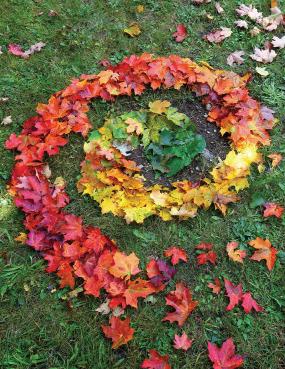
5 4
Lower School Overview
OUR LOWER SCHOOL CURRICULUM
empowers students to navigate their own intellectual journeys from their earliest years at North Country School. Students learn in small classes with caring and passionate teachers while also experiencing rich co-curricular offerings that reinforce skills and concepts in a cross-curricular, handson fashion. Every minute of the NCS students‘ day is deliberately and thoughtfully composed to ensure our students remain curious, confident, and supported learners. The Lower School academic environment both provides individualized attention and asks our students to participate in collaborative learning experiences. In every class, we focus on equipping our students with a variety of ways to think critically and take increasing responsibility for their learning.
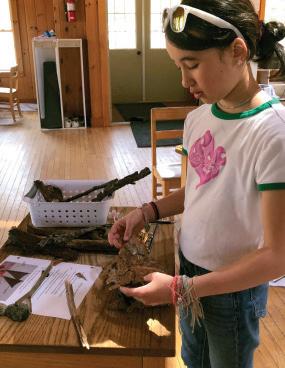
FOURTH GRADE
ENGLISH
Fourth Grade Language Arts is composed of our daily reading and writing workshops. Most days, there is a designated time for independent reading, during which students peruse books of their own choosing with guidance from the teacher to ensure breadth and depth of literary exploration. Each term, there is a teacher-led reading group that focuses on novels and short stories that connect to our Social Studies curriculum. During these read aloud sessions, students practice active listening and contributing mean ingful reflections to the class discussion. Our Writing Workshop asks students to analyze literary elements in both independent and group readings, as well as providing time for grammar, typing, and handwriting practice.
HISTORY
Fourth Grade Social Studies is focused on building research and communication skills through the context of cultural studies. Over the course of Fourth and Fifth Grade So cial Studies, students learn about pivotal moments in human evolution and early civilizations on different continents. Instruction begins with learning how to read for information, be a respectful participant in class discussions, and authentically reflect on what we have learned. In Fourth Grade, the Fall Term is dedicated to examining the history and society of the Haudenosaunee, a confederacy of Indigenous nations in New York State and Ontario. In the Winter Term, students explore the development of early humans and the ancient cultures on the continent of Africa.
During Spring Term, students continue to practice and apply these skills to the study of early civilizations in Asia.
SCIENCE
In Fourth Grade Science, students learn to recognize and describe patterns in nature through detailed observation of and interaction with their environment. Following the cycle of seasonal changes in the Adirondacks, students make daily weather observations, learn about animal adaptations and life cycles, track the growth of plants and animals, and conduct guided research on topics of their choosing. Through frequent, hands-on collaboration with our farm and garden programs, students are encouraged to explore connections between topics in science and their local environment.
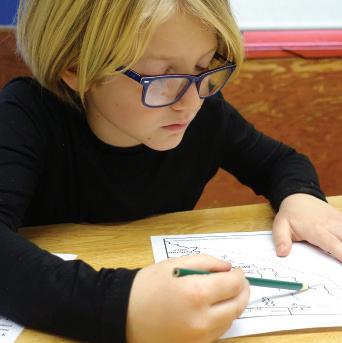
In Fourth Grade Math, students continue to develop a flexible numeric sensibility through practice with the four basic operations of addition, subtraction, multiplication, and division. Starting by building an understanding of place value up to the millions, students learn to recognize patterns, compare and order numbers, and solve problems by progressing from concrete, to pictorial, and finally to abstract methods. The final term of Fourth Grade Math focuses on applying skills developed throughout the year to represent and perform operations with fractions.
7
FIFTH GRADE SIXTH GRADE
ENGLISH
Language Arts is composed of our daily reading and writing workshops. In this consistent setting, students build their communication skills and develop new interests in learning about and showing what they know about the world around them. They learn and practice fundamental components of reading comprehension and written expression. During our reading workshop, students split time between choosing their own reading materials with teacher guidance and also have the opportunity to share common texts as a class during “read alouds” that connect to the Social Studies/Science curriculum. In the lower grades, we gradually build the terminology and framework of the writing process. Students gain an understanding of the writing and revising process, which in turn builds their appreciation for brainstorming, organizing, drafting, and revising. Lessons to reinforce comprehension skills and check for understanding build students’ agency in progressively independent reflections. This includes refining their understanding of the conventions of grammar, their handwriting and typing fluency skills, and the integration of cross-curricular vocabulary studies.
SCIENCE
The overarching theme of Fifth Grade Science is building an appreciation for the interconnected nature of geography and cultural development. There is an intentional co-curricular design to this course as it works in conjunction with the study of early civilizations in Social Studies. Students learn about the ways in which geography and landscape support or detract from the development of these burgeoning cultures. Using comparisons to how the land around us supports the ways in which North Country School functions, the fifth-grade class learns about soil science in relation to agriculture, manipulating the land to encourage thriving civilizations, and the importance of diversifying across an ever-changing landscape. Students study ecosystems and biomes through handson projects, research, note taking, and by practicing scientific-drawing skills. By understanding the ways ecosystems thrive through the interconnectedness of their parts, students are able to see the differences and similarities between biomes around the world.
HISTORY
Fifth Grade Social Studies builds off of Fourth Grade’s dive into early civilizations across the world, studying cultures from Europe, South America, and Oceania. Through a combination of readings and hands-on projects, students study the cultural elements of civilizations on each continent, including their writing system, religion, government, class structure, cities, and art. Students are able to strengthen their writing, research, and public speaking skills through a variety of class projects. A key part of showing understanding in Fifth Grade Social Studies includes independent research, brochure projects on specific cities or civilizations, and discussion surrounding comparing and contrasting different civilizations. Students are also able to connect the curriculum with subjects taught in Fifth Grade Science. This two-year course of study allows students to develop a deep understanding and appreciation for cultures across the world.
MATH
Fifth Grade Math begins with a review of long multiplication and division designed to consider the complexities and different applications of these operations. Students work on problems geared specifically to their skill level as they deepen their understanding of the context around problems and find ways to use those skills in more increasingly complex problems. The focus of the course then moves to numerical expressions and fractions during the Winter Term. Students learn to write expressions based on words and then solve them using the order of operations. Students also examine how moving grouping symbols around in an expression affects the value. Students practice using both manipulatives and fraction multiplication to add, subtract, and multiply fractions, as well as convert improper fractions to mixed numbers and back. In the Spring Term, students review decimal multiplication before continuing on to Cartesian Planes and linear patterns. By the end of spring, students are able to identify and graph the coordinates of points, and notice linear patterns and identify their meanings.
ENGLISH
In the last year of Lower School Language Arts, Sixth Grade students continue to deepen reading comprehension, connection, and analysis through guided reading response sessions. Reading instruction centers around independent reading, all-class read alouds, and audiobooks. Students are led through a series of lessons and reflection sessions that incorporate the six “Notice & Note Signposts” as well as “Book-HeadHeart” questions, developed by educators Probst and Beers, serve as a framework for these discussions. With these frameworks, students learn ways to identify the key components of character development. These connections with books—and each other—enrich the classroom reading experiences. Writing instruction focuses on continuing to provide students with practice in the processes of brainstorming, organizing, writing, editing, and revising for each project. With independent writing time, teacher guidance, and peer editing sessions, students complete a variety of writing projects each term while continuously building on skills for each of these creative and reflective modes.
SCIENCE
Sixth Grade Science gives students the opportunity to learn about and apply the scientific method, but it also explores several different units of study over the course of the year. In the Fall Term, they learn the basics of Geographic Information Systems (GIS) and have the opportunity to learn how to use some basic tools of mapmaking. The culminating project of the unit is a collaborative creation of a conservation plan based on maps created by the students. In the Winter Term, students do a mini-unit on science fiction in December and then move into learning about the wonders of the human body after Winter Break. Class content focuses on information directly applicable to middle schoolers. Topics include the biological basis, diet, sleep, emotional management, and anxiety. Woven through every lesson is a strong foundation of observation, data collection, and analysis that will be built on in the spring. The final unit of the class focuses on a large project highlighting the scientific method and the NCS farm. Students design their project based around a farm animal of their choice. As projects begin to take shape, students combine
projects to create achievable experiments at the barn. As students complete their experiments, they apply their previous knowledge of observation, sensation, and perception to create a lab report following the steps of the scientific method.
HISTORY
Sixth Grade Social Studies builds upon skills and content acquired during Fourth and Fifth grades, and begins to prepare students for Upper School history courses. Our work is focused on building understanding of the foundations of geography and global contemporary culture. Throughout the year, students explore elements of general geography, U.S. regional geography, and global geography. Students also examine contemporary culture with a focus on specific areas in Africa, South America, Asia, and Oceania. Students are assessed based on participation in class activities and projects. In an effort to gain a better sense of place, students spend a term studying New York State history and U.S. geography. Throughout the New York history unit, students complete a timeline of New York from 1604–1900, reenact a famous Revolutionary War battle, dive deep into Ellis Island immigration, and more. Students finish the term with the U.S. geography unit, during which each student researches and completes a project of their choosing about a state outside of the Northeast. Students conclude the year ready to begin U.S. History in Seventh Grade.
MATH
Sixth Grade Math marks the end of the study of arithmetic as well as the beginnings of pre-algebra. Course material is delivered in a traditional classroom setting with an emphasis on problem solving. Mathematical problems are juxtaposed with different types of puzzles, and a heavy emphasis is put on process as opposed to product. Topics covered include rational numbers, basic numerical and algebraic expressions, and polygon geometry. Woven through the content material is opportunity for students to practice challenging problems with tact as well as to practice working through complex, multi-step problems. Over the course of the class, students create a notebook that they then use to complete challenging problems.
8 9


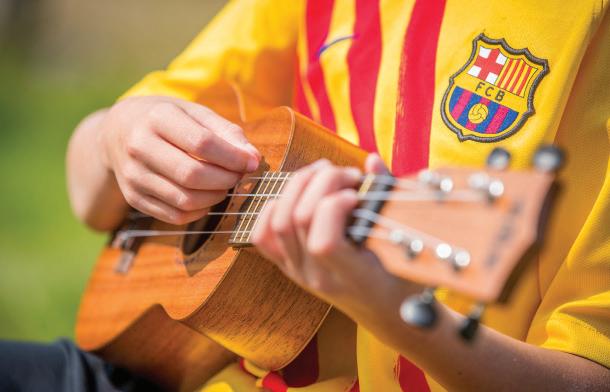
Lower School Arts & Electives
EDIBLE SCHOOLYARD
The Edible Schoolyard Program in Fourth through Seventh grades gives students the knowledge and skills to make food choices that are healthy for themselves, their community, and their environment. Students learn cooking and baking skills and build their understanding of how to go about sourcing and interpreting recipes. They also practice working together to successfully complete projects in a variety of settings, including in the Teaching and Learning Kitchen, in the garden, and at the barn. We focus on the seasonality of ingredients and developing an understanding of how growing and harvesting changes throughout the year. Each class connects to our own farm, as well as local and global food systems, in lessons that teach students where food comes from and the work that goes into getting that food to our plates. Students also participate in the meaningful work of growing, harvesting, cooking, and preserving food. Lessons cover food history, food systems, food and plant science, agricultural traditions and methods, and connect to the backgrounds and traditions of students in these classes as well as our Adirondack region.
VISUAL ARTS

access to the fundamentals of studio arts including painting, drawing, sculpture, ceramics, photography, and fiber arts. Through guided instruction, students explore artistic expression, build fine motor skills, share community resources and learn to reflect on their own work as well as the work of their peers. The students develop confidence in themselves and their work in small groups, letting the instructor have time for one-onone instruction. Each course culminates in a constructive critique and a chance for the work to be displayed publicly.
PERFORMING ARTS
The Fourth through Sixth Grade Visual Arts program gives students
The Fourth through Sixth Grade Performing Arts program introduces students to the fundamentals of varying forms of performance in the worlds of dance, music, and theater. Through guided instruction, students explore artistic expression and develop confidence in using their bodies and voices. Each course culminates in a student-led performance for the community. The process of preparing for this performance truly encapsulates the core values of North Country School; students are responsible for learning their individual parts, they persevere when things do not go as expected, and they work together as a team to connect to each other and to the performance piece.
11
Upper School Overview
IN GRADES SEVEN THROUGH NINE,
our place-based, exploratory curriculum further encourages students to understand who they are and who they want to become as learners and people. Students are increasingly challenged as well as encouraged to take greater responsibility for their learning, with classes and curricula that promote self-exploration and discovery. A significant change between the Upper and Lower School is the addition of elective based courses. Each term, Seventh through Ninth Grade students participate in independently selected courses that they have likely experienced during their previous years at NCS. Students have the opportunity to select from a variety of classes in the performing and visual arts, as well as in design and build, Edible Schoolyard, and Outdoor Leadership.
Another foundational element of the Upper School is our Ninth Grade. As the culminatory year for students at NCS, Ninth graders are taught to model the behaviors and characteristics expected of responsible members of the community, setting the tone for the younger students on campus. Ninth Grade students develop exceptional leadership skills while serving as mentors in houses, at the barn, during work-jobs and mealtimes, and while participating in countless co-curricular activities after the academic day and on weekends.

SEVENTH GRADE
ENGLISH
Seventh Grade English encourages students to develop as avid readers, writers, and critical thinkers. Students engage with a variety of creative, narrative, and expositional writing, while also developing their personal taste in literature. Through poetry, short fiction, and persuasive rhetoric units, students are presented with opportunities to explore different forms of writing while developing their own voices. Students regularly participate in small group and all-class analysis and critique, evaluating published works as well as their own writing and that of their peers. Over the course of the year, students hone prewriting, drafting, revising, publishing, and ana lytical skills that serve them beyond the boundaries of the classroom. In addition to extensive writing, students spend the majority of the year reading independently selected literature. By developing a better understanding of their own reading preferences, students engage more readily and eagerly with reading, which supports their in-class work of analyzing, critiquing, and sharing about encountered texts. Stu dents find success in Seventh Grade English by connecting with various, and often unfamiliar, writing styles and literary options, and by finding joy in exploring new ways to express themselves through writing.
HISTORY
ing, analytical writing, and research skills, building greater academic endurance, independence, and responsibility. Students are assessed on their writing, research-based presentations, class discussions, individual and group activities, document-based question responses, and notebook checks, providing diverse opportunities to demonstrate learning and adaptability at an individualized level.
SCIENCE
Seventh Grade science focuses on matter and energy transfer. Students start by familiarizing themselves with elements, atoms, and the properties of matter.
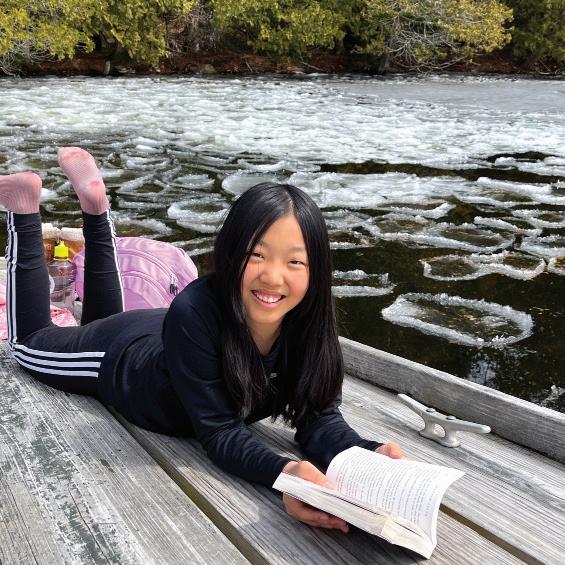
The hands-on nature of the curriculum asks students to collaborate with classmates, analyze data, and use critical thinking skills. The second half of the year focuses on electricity, energy transfer, and power generation, and builds on students’ communication, collaboration, and research skills. Students also spend a portion of the term honing research skills and presenting to the class on specific scientific fields of interest. The final unit of the year engages students in a project-based rocketry exploration that continues building on students’ understanding of energy transfer, while interlacing some introductory physics.
MATH
U.S. History I is the first of a two-part survey course that covers pre-American history through the end of the American Civil War. This course examines major historical events, conflicts, and achievements, and provides students with a lens through which to develop greater critical thinking skills. Students practice note taking, annotating, public speak-
At North Country School, we recognize that students are on their own journey of academic discovery. Therefore, we carefully place students in a math course that matches where they are on their journey. Please see the Upper School Math Courses section of this guide to find North Country School’s math course offerings.
12 13
EIGHTH GRADE NINTH GRADE
ENGLISH
In Eighth Grade English, students develop as lifelong readers and writers. At the beginning of each class, students either read a short piece of literature together and discuss it or participate in a mini-lesson. Students then work on independent projects in reading or writing workshops for the remainder of class. While they are working, students are supported through one-on-one student-teacher conferences. Over the course of the year, students write poetry, memoirs, essays, and short fiction. They also learn how to self-select engaging books and develop the habit of reading every day. Each week students are given the opportunity to recommend books to their peers, and once a month they write a book recommendation and reflection in letter form to a classmate.
As students complete their term-long writing projects, they are published and celebrated in class anthologies. Students are given the freedom to ex plore topics that interest them in both their reading and writing. This, and managing term-long writing projects, help develop their individual responsibility. Students practice resilience as they work through the editing and revising process to get their writing ready for publication. Sharing reading recommendations and their own writing with their classmates fosters a sense of connection and community.
HISTORY
analytical writing, and inquiry. The class engages students in discussion, games, writing, presentation, and research. At the end of the year, students have a greater understanding of their relationship to the past and are prepared to be compassionate and responsible members of their community.
SCIENCE
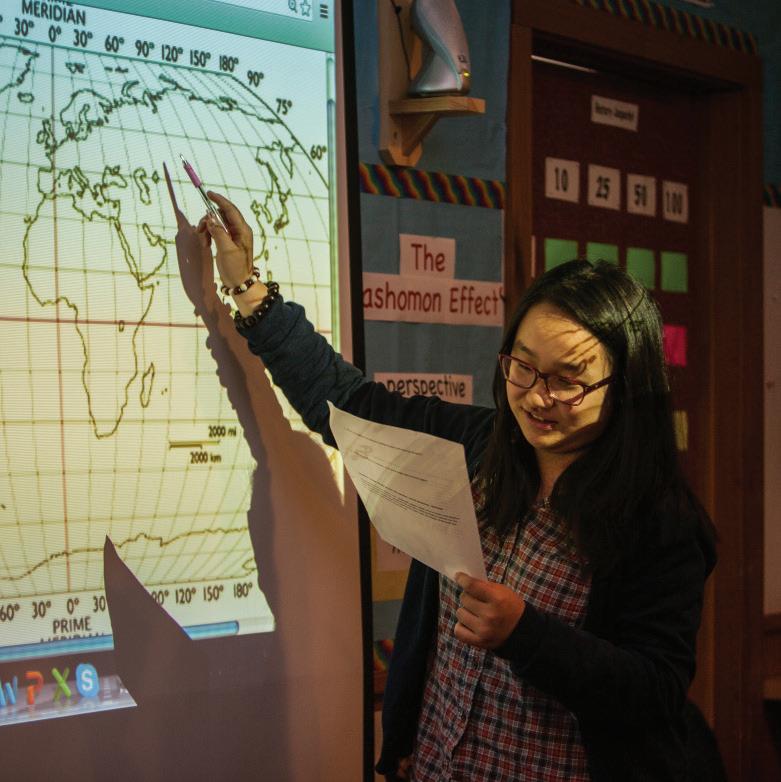
Environmental Science meets at the intersection of local, regional, and global natural phenomena. We use the campus, mountains, and the surrounding Adirondack Park as a classroom to explore and investigate the relationships between humans and the ever-changing world. This course examines major ecological issues, processes, and solutions. Centered around climate change, Environmental Science uses a hands-on approach to make this topic engaging and relevant. Students participate in outdoor labs, complete and present research projects, and practice analytical writing. This course encourages students to become more aware of their responsibilities toward the world in which they live, their personal connections to nature, and actions they can take to improve sustainability and stewardship at school and beyond.
MATH
U.S. History II is the second half of a two-part survey course. The class considers the historical changes, stories, and debates of the United States from the Reconstruction Era through present day. Students use primary and secondary source material and the lens of a historian to build skills in critical thinking,
At North Country School, we recognize that students are on their own journey of academic discovery. Therefore, we carefully place students in a math course that matches where they are on their journey. Please see the Upper School Math Courses section of this guide to find North Country School’s math course offerings.
ENGLISH
Ninth Grade English introduces students to the tools, terminology, and knowledge base that will help them understand, discuss, and write about literature and other cultural products. Students read, discuss, and write about novels, films, plays, poems, and other texts inside and outside of class. They also build independent learning, research, and citation skills, in support of Global Issues class. Topics of study include, but are not limited to, evaluating representation and inclusion in stories, identifying archetypes, analyzing themes in literature, investigating authors’ lives in connection to their writing, reading and performing Shakespeare, and writing poetry. Students demonstrate their learning through class discussions, short and frequent writing assignments, prepared and impromptu presentations, carefully prepared performances, and traditional multi-paragraph essays. Group investigations and discussions are key to the course, as students co-construct knowledge together. Connections to history, world cultures, current events, and students’ own multilingual experiences are highlighted throughout the course. Students should leave the course with an appreciation for the power of stories and language to describe and transform worlds and worldviews.
HISTORY
Global Issues asks students to connect with the world beyond their immediate surroundings and connect with people, places, and phenomena outside their realm of experience and understanding. Students are pushed to find, question, and critically consider unfamiliar content while simultaneously developing skills that will support their learning. Global Issues starts by teaching students to collect, interpret, and convey information while paying close attention to media bias, misinformation, and propaganda. Using an ever-increasing skill set, students continue by focusing on anthropology and ethnography, international relations and intergovernmental bodies, human rights, and current events. Throughout the course, students participate in constant class-wide discussion, small group activities and simulations, and general seminar-style conversation. Students are constantly encouraged to explore and foster personal understanding and curiosity through independent research projects and all-class debates. Learning and skill
development is pushed further through current event readings and discussions, which are curated and run by students. Ninth Grade students leave Global Issues with a greater awareness of how people interact interpersonally, regionally, nationally, and internationally, and how these interactions and layers of interplay affect the entire planet.
SCIENCE
Biology offers students an opportunity to dive headfirst into a lab-intensive science course where they can develop skills, knowledge, and appreciation for life sciences while taking advantage of a curriculum that deeply integrates with the surrounding campus and environment. Over the course of the year, students examine the cellular basis of living things, energy metabolism, and genetics. They also explore evolutionary relationships among organisms and study the diversity of life on Earth. Biology class spends the first part of the Fall Term delving into introductory topics such as the scientific method and characteristics of life. The majority of the term is spent learning about cells and cellular processes. During the first part of Winter Term, biology students explore genetics and complex patterns of inheritance. The second half of the winter focuses on the history of life on Earth and evolution. Students begin the Spring Term with a focus on the kingdom of life as they learn to identify organisms by unifying characteristics and dichotomous keys. Students are challenged to incorporate concepts covered over the year to conduct research on human body systems. Each students’ research culminates in a presentation about their chosen topic to the rest of their class. As the course progresses into an ecology unit, students conduct field research on a transect line project. Throughout the year, regularly scheduled course work, lab work, and exams help build academic stamina and responsibility while preparing students for future science courses.
MATH
At North Country School, we recognize that students are on their own journey of academic discovery. Therefore, we carefully place students in a math course that matches where they are on their journey. Please see the Upper School Math Courses section of this guide to find North Country School’s math course offerings.
14 15
Upper School Math Courses
SEVENTH GRADE MATH
Seventh Grade Math focuses on identifying and working with proportional relationships, percentages, arithmetic with rational numbers, geometric constructions, volume and area equations, and solving algebraic expressions. Students reacquaint themselves with fractions before moving into dimensional analysis. The course continues with students graphing lines, making tables by hand and with software, and using geometric shapes to solve simple equations. Throughout the year, there is a heavy focus on asking specific questions, explaining thought processes, and organizing work. Students learn to work independently and in small groups to both create and solve problems. Collaborative problem-solving and assessment encourages students to take responsibility for their own understanding and feel comfortable working through challenges while learning from each other’s successes and mistakes.
PRE-ALGEBRA
Pre-Algebra covers all topics introduced in Seventh Grade Math but focuses on two-step and multistep equations, graphing lines, and factoring with the distributive property in preparation for Algebra I. Students typically take this class as Seventh Graders who then move into Algebra I in Eighth Grade.
ALGEBRA I
Algebra I is a traditional, small-setting, year-long algebra course that incorporates inquiry and experiential learning. A typical class day starts out with a warm-up of prior coursework followed by the introduction of new topics. Students work collaboratively to solve problems on the board and fill out guided notes. This is followed by individual classwork and homework. The course includes simplification of polynomial expressions, graphing linear and quadratic equations, systems of equations, factoring, and algebraic fractions. The course may also include a thorough study of radical expressions and quadratic equations. Assignments are graded for completion and students are to attempt all problems assigned. Each student’s progress is assessed through performance on tests and quizzes in addition to class-
room engagement. An emphasis is put on making corrections to highlight the ongoing process of learning and to build resilience through trying again after encountering setbacks. In addition to Algebra I course work, students will have the opportunity to learn how to use spreadsheets to hold data and do math with that data. If time permits, students may have the opportunity to use these skills to investigate place-based data or interpret graphs of climate data.
ALGEBRA II
Algebra II follows Geometry in the mathematics sequence and covers factoring, solving, and graphing polynomial equations, as well as analytic geometry, logarithms, and basic trigonometry. Classes consist of mini lessons and open discussion where students share observations and ask questions, often followed by independent work while students receive individual teacher guidance. Students complete challenging assessments every two to three weeks and gain experience with tools including Google Sheets and Desmos Graphing Calculator. Students in Algebra II are often surrounded by peers who share a strong foundation in mathematics and benefit from an explorative and focused environment.
GEOMETRY
Geometry is a Tenth Grade class offered to students who have completed Algebra I. This course explores the language and syntax that provides a foundation for the efficient communication of mathematical concepts. Students often notice that this course is significantly more language based than traditional algebra classes they have taken. Classes consist of growing from lesson to lesson through guided discovery, with significant opportunity to work independently or one-on-one with the teacher. Students become confident with comprehensive triangle congruence proofs, relationships between parallel lines, constructions, Euclidean geometry, and trigonometry. Students receive term grades based on participation in class discussions, homework, and chapter assessments. Students who complete geometry typically move on to study Algebra II.
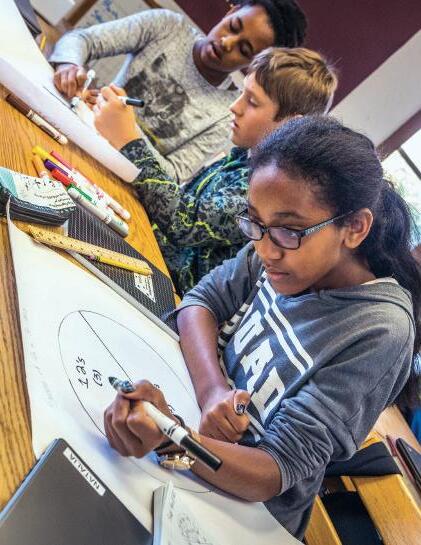
PRE-CALCULUS
Pre-calculus is an advanced math course offered only on a student-by-student basis and is taught either as an independent study through an accredited online educational provider or in house as a 1:1 math class. Students are expected to be motivated self-learners with a strong background in Algebra II.Topics include review of functions including logs, analytic geometry, and trigonometric functions and formulas. Students also cover vectors, matrices, sequences and series, combinatorics, statistics, and curve fitting. Often, students finish the year by working toward a foundation for calculus by taking limits and derivatives.
CALCULUS
Calculus is an advanced math course offered only on a student-by-student basis and is taught as an independent study in conjunction with an accredited online educational provider. While students take an online course, they have 1:1 support from dedicated NCS math faculty. Through this course, students learn to understand change geometrically and visually, analytically, numerically, and verbally. Instead of simply getting the right answer, students learn to evaluate the soundness of proposed solutions and to apply mathematical reasoning to real-world models. Through this course students begin laying a framework for understanding the complex relationships behind real-world phenomena.
16
Upper School Arts & Electives
EDIBLE SCHOOLYARD
The Edible Schoolyard (ESY) Program in grades Seventh through Ninth gives students the knowledge, values, and skills to make food choices that are healthy for themselves, their community, and their environment. Students in ESY elective classes learn cooking and baking skills as well as recipe sourcing and reading. They work with their peers to complete projects in the kitchen, in the garden, and at the barn. Each term, classes focus on the seasonality of ingredients during lessons that connect to the NCS farm, as well as local and global food systems. Students learn where their food comes from, and gain an understanding of the work that goes into getting that food to their plates. Students also participate in the meaningful work of growing, harvesting, cooking, and preserving food on campus. Lessons also delve into food history, food systems, food and plant science, agricultural traditions and methods, and connect to the backgrounds and traditions of students as well the different groups that have lived in the Adirondack region throughout history.
VISUAL ARTS
The visual arts program for Seventh through Ninth graders provides students with the fundamentals of studio arts including painting, drawing, sculpture, ceramics, photography, and fiber arts. These classes emphasize basic skills while providing advanced students with the opportunity for individualized programming including intermediate classes and independent projects. Through guided instruction, students explore artistic expression, refine motor skills, share community resources, and learn to reflect on their own work as well as the work of their peers. Visual arts elective programs provide older students with the opportunity to have a choice in their arts education by selecting mediums with which they would like to engage. Students develop confidence in themselves and their work by working independently or in small groups, and faculty have time for one-on-one work and conferencing with each student. Each course culminates in a critique and provides students the opportunity to display their work around campus.
PERFORMING ARTS
The performing arts program for Seventh through Ninth graders asks students to expand upon their prior knowledge and experience
in different performing art disciplines. Through these electives, students will often select, rehearse, and perform various choral, instrumental, and theatrical works, many of which are original pieces crafted by students and their classmates. Through both guided and independent study, students refine artistic expression and strengthen confidence by using their body, instruments, and voice. Each course culminates in opportunities for student-led performances.
DESIGN AND BUILD
Term-long Design and Build classes bridge the arts and engineering. Students are regularly presented with challenges and opportunities to collaboratively ideate and create using interdisciplinary processes and thinking. Students are introduced to the entire process of design, construction, and craftsmanship through woodworking and metal fabrication, as well as robotics and hands-on engineering projects. With good technique and close supervision, students learn to plan and build infrastructure for everyday use on our physical campus, to make their own instruments, craft furniture, create sculptures, design technical theater productions, and more.
OUTDOOR LEADERSHIP (ODL) Outdoor Leadership provides students with the necessary tools to have lifelong confidence in the outdoors as well as the ability to lead themselves and others into wild places safely and respectfully. Students have the opportunity to develop a wide array of skills and knowledge while working toward First Aid, CPR, and Wilderness First Aid certifications. Students also learn how to use maps and compasses, plan outdoor trips, set up campsites, cook food outdoors and in the backcountry, and become more familiar with Leave No Trace principles. Over the course of the year, Outdoor Leadership outings and curricula are significantly shaped by the dynamic seasons experienced in the Adirondacks. Students have opportunities to go overnight backpacking, ice climbing, backcountry skiing and snowboarding, and canoeing as part of larger trips they collaboratively plan each term. Through Outdoor Leadership, students fully realize their identity is not only accepted in wild places, but is honored and respected. Specific courses vary by season, and have included Celebrating the Harvest during Fall Term, Cooking in a Winter Wonderland in the Winter Term, and Celebrating Spring in the Spring Term.
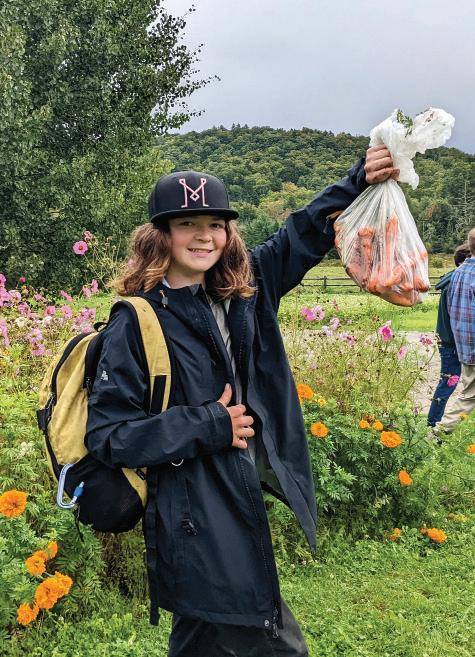

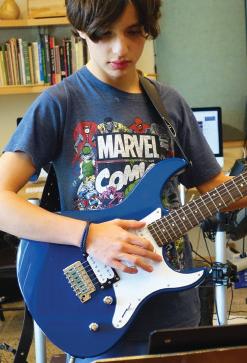

18
Foreign Languages
SPANISH I Spanish I is an introductory course with the goal of familiarizing students with the Spanish language and Spanish speaking cultures to build basic skills in communication and description. This course is for students with minimal or no prior exposure to the language. Throughout the year, students will learn how to communicate in the present tense. The focus is on the development of verbal and written communication so that students are able to describe themselves and share information about others as well as the world around them. Spanish I includes learning -ar, -er, -ir verbs as well as several commonly used irregular verbs. Students learn through projects, reading stories, and grammar-targeted activities. Class time also includes opportunities for students to have guided conversations with each other in the target language and listening activities to develop their aural comprehension. As language is so strongly tied to culture, students have exposure to Spanish speaking cultures around the world as well as Spanish as a language spoken within the United States. This course presents the Spanish-speaking world as a body of people with diverse cultures, backgrounds and traditions and draws connections to the representation and presence of Spanish speakers within the United States.
spoken. Through Spanish II, students broaden their worldview, gaining greater awareness and understanding of others’ culture and experiences. Spanish II is in many ways an interdisciplinary course that combines literature, history, and geography as a means to learn about language and culture.
Learning Support
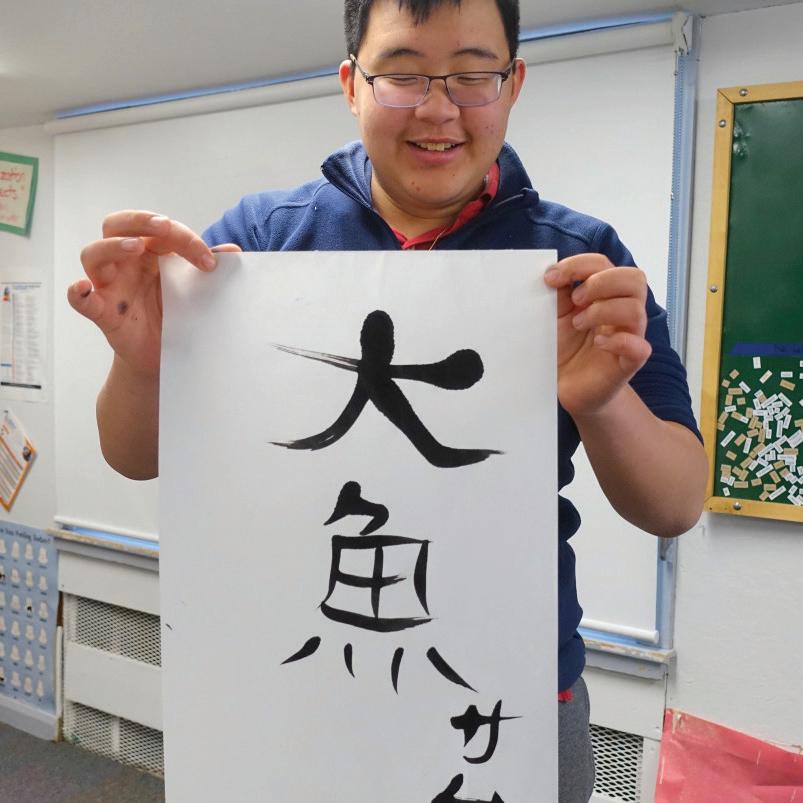
SPANISH II Spanish II is an intermediate course that builds on strengthening basic present tense communication skills and then introduces students to other tenses, primarily within the indicative mood. This course is for students with prior experience in Spanish and can be adapted for students with varying levels of experience and ability. Language learning in Spanish II happens through grammar exercises, writing assignments, conversation, and projects. Students also spend a large portion of the year learning through reading books. Grammar topics may include stem-changing verbs, reflexive verbs, ser vs. estar, and new tenses, all dependent on the experience level of students in the class. Larger topics include sports and hobbies, geography and climate of South and Central America, as well as the history of Guatemala. Students are introduced to people and culture through stories to develop a connection to places where Spanish is
JAPANESE Japanese is an elective course, usually for Eighth and Ninth graders. The purpose of this course is to develop basic interpretive, interpersonal, and presentational skills in spoken and written Japanese. By the end of the school year, students should be able to demonstrate proficiency at level A1 or A2 of the Japan Foundation Standard (ACTFL Novice High or Intermediate Low). Grammar instruction and cultural explanations are typically in English, but the instructor uses Japanese regularly for communication in the course, and students are encouraged to use Japanese whenever possible. Students begin with basic greetings, simple questions, and self-introductions, focusing on the use of the copula です. They continue from there to describing existence and location with あります and いま す, and eventually to describing activities with a variety of action verbs in ま す forms. Using adjectives to develop more detail in speaking and writing is the final unit of the course. Literacy development and communication skills are both emphasized, with students learning to read, hand-write, and type both the hiragana and katakana syllabaries. In class, students practice constructing sentences, asking and answering questions, and role-playing simple situations. They eventually progress to listening to and reading simple stories written for language learners, and watching both authentic and pedagogical video content. Simple reflections in Japanese and English follow many videos and stories. Assessments include hiragana and katakana quizzes, prepared oral presentations with slides, sentence-level writing exercises, reading fluency assessments, and a final oral interview. Students develop practical communication strategies that allow them to approach Japanese speakers and Japanese-speaking settings with confidence, even though their language skills may still be rudimentary.

OVERVIEW
North Country School has a long history of engaging and supporting a range of learners by providing academic guidance for students and creating an optimal learning environment. An underlying goal of the program is to prepare students for a successful transition to secondary schools.
Enrolling in Learning Support is initiated by families during the application process, or at the recommendation of North Country School’s Learning Support director. Students who benefit from the Learning Support Program are bright, capable, and inquisitive, but may have struggled in a traditional academic setting. The program works with students along a continuum of experience and needs, from those who are well served by an individualized plan to students who require regular check-ins and a group setting. This support is delivered by instructors in small groups, separate from classroom instruction, and focuses on the following:
✦ Executive Function differences, including time management, homework production and planning, organization of materials, breaking down large tasks into smaller pieces, initiating tasks, and sustaining progress on a task.
✦ Written expression weaknesses linked to dysgraphia, elaboration of ideas, organizing an essay or paper, and difficulties starting a piece of writing.
✦ Reading weaknesses related to comprehension and fluency that are supported by assistive technology and direct instruction in reading skills to support comprehension.
✦ Reading intervention and remediation for students with more significant reading and writing challenges rooted in phonological awareness deficits.
1:1 intervention using the Orton-Gillingham Approach provides individualized explicit instruction in foundational reading, writing, and spelling skills. Intervention is provided two-to-three days a week, depending on a student’s level of need.
20
21
Learning Support Services for Fourth through Sixth Grade
Essential academic skills such as how to study for a test, planning an essay, and ways to keep track of homework are taught by the classroom teachers in consultation with the Learning Support Department. The self-contained classroom setting for students in grades four through six allows for consistent routines, monitoring of skills, and individual attention.

Learning Support Services for Seventh through Ninth Grade
LEARNING SKILLS
A year-long program, Learning Skills meets the needs of students who are currently experiencing frustration and inconsistent success with the dayto-day demands of producing schoolwork that best represents their ability. This program provides coaching and strategies instruction that is reinforced in the classroom and in guided study halls. The program supports individualized goal setting and the application of those goals to students’ day-to-day course work. Students enrolled in Learning Skills meet with their instructor five periods per week with one other student. Additionally, they participate in a guided evening study hall during weekday evenings with a 6:1 student/teacher ratio.
LEARNING LAB
This program serves students who may need extra time and guidance to complete assignments. For returning students, this course serves as a transition from the 2:1 Learning Skills setting to greater independence. For some new students, Learning Lab offers transitional support as they engage in a new academic setting. Students enrolled in Learning Lab meet with their instructor three periods per week with five other students. Families can elect to enroll their child in a guided evening study hall during weekday evenings with a 6:1 student/teacher ratio.
WRITING LAB
Support for assigned writing from ELA/English, science, and history classes, in coordination with content teachers.
READING LAB
Support with reading fluency and reading comprehension skills.
ENGLISH AS A SECOND LANGUAGE
ESL at North Country School develops students’ literacy, academic writing, and critical thinking skills
to prepare for mainstream English courses and to support learning in mainstream science, math, and social studies courses. Deepening students’ understanding of diverse American and English-speaking cultures is also a key learning goal. Our ESL courses often combine students from multiple grade levels to facilitate group work and cooperative learning. Lower School students typically have two periods of ESL daily during their grade level’s reading and writing class time; Upper School students usually take one period of ESL instead of their grade-level English language arts class, and may also be enrolled in support courses meeting three times weekly to help students with mainstream history and science coursework. ESL class sizes are kept small (two to six students) to facilitate active participation. Older students prepare for and take TOEFL iBT and SSAT as part of the secondary school admissions process.
Contacts
Todd Ormiston
Executive Director tormiston@ncstreetops.org
Matthew Preston Smith
Director of School mpsmith@northcountryschool.org
Bill Newman
Director of Admission bnewman@northcountryschool.org
Yunga Webb
Director of Equity and Inclusion ywebb@northcountryschool.org
Keith Rosser
CFO, Business Manager krosser@ncstreetops.org
23
CASCADE ROAD, LAKE PLACID, NY 12946 518-523-9329
4382





















